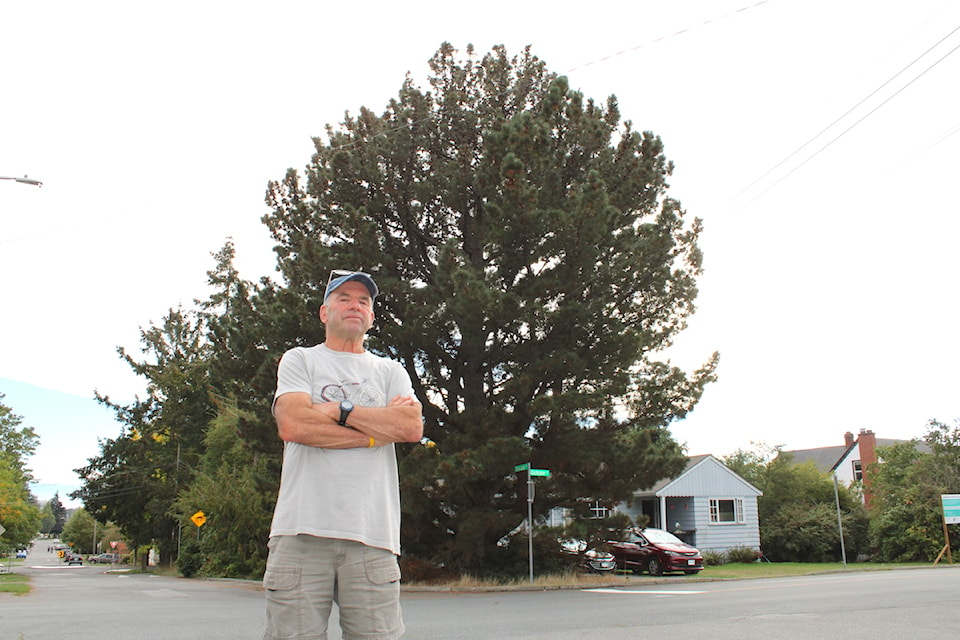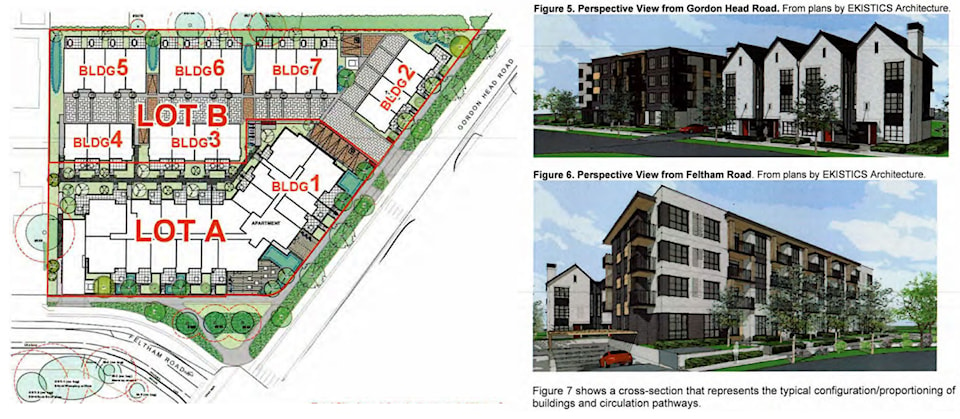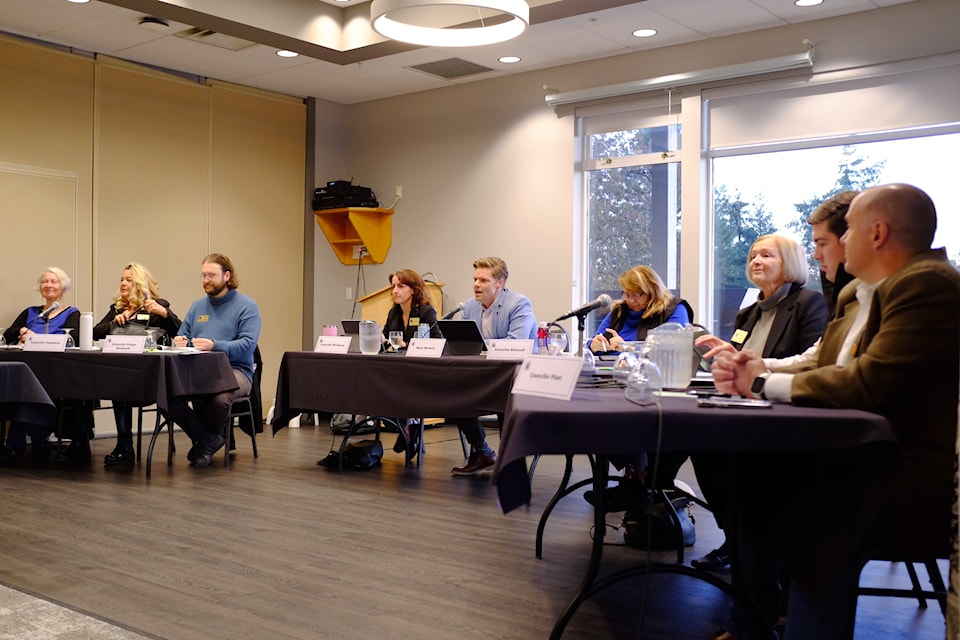Saanich residents had the chance to speak their minds, share opinions, and air their grievances on hot-button issues before council in a new format.
Designed to enhance public participation in a more relaxed setting, the municipality’s first-ever town hall event took place at the Cedar Hill Golf Course clubhouse on Oct. 22.
With 26 scheduled speakers and more than a hundred attendees, the small room was stretched beyond capacity.
From the start and throughout the meeting, the most prominent topic of conversation was the residents' desire to protect and preserve the municipality's trees.
Saanich resident Dave Secco, who advocated for the protection of neighbourhood darling Big Pondy – a decades-old towering pine tree located at Cochrane Street and Dean Avenue – was one of the first to speak.

“I'm here to tell you that your first job representing Saanich should be saving these life-sustaining canopies and root systems at all costs, period,” he said. “Nothing else comes close.
“Yes, we need housing but we need the big mature trees more.”
Several speakers, including Dean Heights resident Linda, highlighted the deeper importance of these trees.
More than simply being neighbourhood fixtures on people's lawns, she explained that mature trees play a major role in erosion control and slope stabilization, and are prime absorbers of stormwater.
Their removal could be, she said, disastrous.
“This significant tree is an environmental workhorse,” she said. “My neighbourhood has persistent battles with runoff during storms. My property on Dean and Forester floods after heavy rain despite storm drain catchments on both sides. I've only had water inside once but numerous neighbours have not been as fortunate.”
Mayor Dean Murdock and Couns. Teale Phelps Bondaroff, Nathalie Chambers, and Judy Browoff all agreed that protecting trees is paramount for the community.
Highlighting the municipality's new Urban Forest strategy, Murdock reiterated the district goal of planting up to 10,000 trees yearly to fight extreme weather conditions and increase the urban canopy.
Brownoff, however, recognized that the tree protection bylaw had to be updated.
“We're trying to get there, maybe not as fast as we need to, but we'll keep pushing to move forward,” she said.
Chambers added that with “a little creativity ingenuity, inspiration and community public backup,” Saanich could successfully safeguard its trees.
Echoing the concerns of many residents, Linda acknowledged the need for additional housing while emphasizing the importance of prioritizing tree protection. She added that a balanced approach is key.
“I agree, we need housing and I like sidewalks, but I don't understand why irreplaceable trees like Big Pondy must be lost to accommodate development,” she said. “It is possible to develop Saanich while preserving our irreplaceable trees instead of accommodating development by removal of trees. Let's accommodate the trees by ensuring they're included in the plans.”
Bondaroff noted that this issue could be partially addressed by an upcoming parking bylaw, which, if approved, would require developers to incorporate more green space into their projects.
“The idea here is not requiring a minimum amount of parking being built, but rather a maximum… and it won't result in cutting down trees unnecessarily,” said Bondaroff. “We're in a climate and housing crisis, not a parking crisis.”
Another issue raised several times throughout the night surrounded road safety.
Resident Arthur Roberts stressed that Saanich's rapid growth in recent years has neglected and jeopardized pedestrian security. He cited Normandy Road as a prime example.
“Saanich is counting on active transportation flourishing, yet, rather illogically, is downplaying safety for walkers on the very streets where people reside,” said Roberts. “Nowhere should the safety of walkers be thrown under the bus.”
Bondaroff responded to the man’s concern by evoking the municipality’s newly adopted Road Safety Action Plan, approved on Oct. 21
“The plan takes the vision zero goal of achieving zero fatalities and zero serious injuries on our streets using a safe systems approach,” said the councillor. “There's a lot of network screening to identify problem areas and [we’re] looking at a myriad of ways of making a road safer.”
Lastly, housing affordability was also on several people's minds.
One resident expressed dissatisfaction with the lack of affordable housing available in new developments across the municipality, referring to the 93-unit project in Gordon Head greenlit by council on Oct. 8.
“I just recently saw a development go through,” she said. “[Only] a minority of council said that the fact that there was no affordable component was a factor in them voting against it. But the minority means that that development still went through.”
“I feel language should be stronger than what we're stipulating, not incentivizing, not encouraging, but stipulating.”

In response, Coun. Zac de Vries cited that the municipality is confronted with many challenges when it comes to housing.
“Ultimately, whenever you have below-market units, something [or someone] has to pay for it,” said the councillor. “Sometimes that's the density that's afforded to it. Other times that has to come from other levels of government or Saanich itself and that's the real challenge that we're in. Ultimately, it requires some form of subsidies.”
According to de Vries, the municipality had been delivering hundreds of housing units annually at various levels of affordability, with some offered at provincial assistance rates of $500 a month or less. However, he noted that delivering such units now requires around $400,000 in subsidies, compared to about $250,000 in 2017.
“It's just a very challenging reality that we're in,” he said. “That's why we need to invest more [to provide] incentives for non-market housing providers.”


